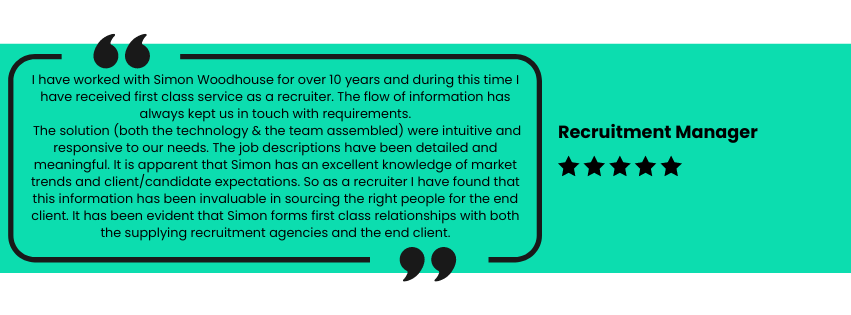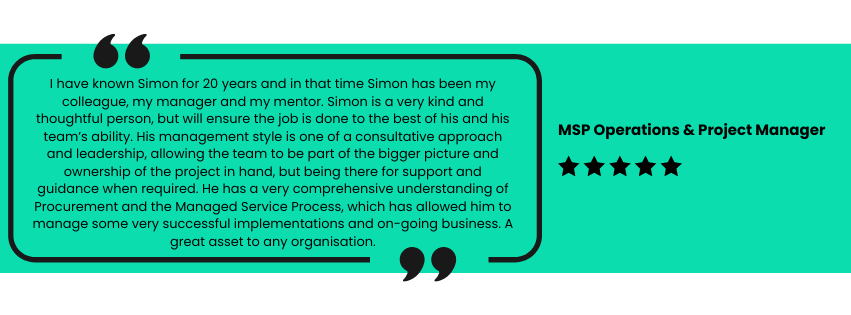Changing a Global Giant - Part 2
Article 4 – Change Management Series
Click here to read other articles on change management
There comes a point in every business when change is inevitable. A state of continuous improvement ensures that a business can stay competitive, relevant to its customers and survive market conditions, ultimately with the intention of growth. This is the second article in a two part series, written by our director, Simon Woodhouse, as he explores how Ford 2000, Ford’s program of corporate cultural change, cascaded down from the team of executives in the War Room in Dearborn, to help challenge Ford’s Purchasing and Human Resources teams to revisit its usage of third party labour.
The Challenge
Ford found that 50% of its automotive revenue went directly to the suppliers. Purchasing’s supply base management was to focus on continuous improvement by working with the ‘best’ suppliers, however there was no established approach or supply base in relation to the supply of third party labour i.e. contractors, consultants and statement of works workers.
Contractors were historically used for administrative roles, but this had changed over time to include technical, design and IT workers. Hence there were low barriers to entry for suppliers and a situation where hiring managers had no established supply chain and little guidance. Their workload now included soliciting CVs, screening, arranging interviews, preparation of purchase notifications and the approach chain, plus the on-boarding activities, all this in addition to the increasing pressures of the day-to-day functions.
Employee Relations had security concerns; there was no way to control the required drugs and alcohol checks, and no effective means to communicate to the hiring community, the agencies or the contractors.
Purchasing had a lengthy requisition process, often being in excess of 60 days. The delays, and loss of candidates had a negative impact upon productivity and efficiency of the company as a whole. Purchasing also had no objective way to measure quality, and therefore, Ford suffered from substandard supply.
Account Payable were burdened with over 100,000 invoices per annum.
There was no way Ford could achieve their pursuit for excellence with such an uncontrolled approach.
In addition, suppliers faced a complex order, renewal and payment process. They had to individually service each hiring managers requirements and had no guarantee that future vacancies would be alerted to them, hence they also had to invest in targeted individual marketing activities. The costs to the suppliers were high, and the chance of success in many cases low. The net impact to the customer was felt via the cost, lower quality of the service and increased time to hire (in some cases failure to secure the hire due to the length of the hiring cycle).
The Approach
Purchasing under took customer and supplier surveys and conducted a benchmarking exercise to determine the current options available within the marketplace.
They set their Vision:
- Improve Productivity
- Improve Timing
- Improve Performance
- Reduce Costs
Ford chose their partner who was to help design and then administer the service. They were chosen because of their project management expertise and their contract personnel management experience. It was important to them to have a vendor neutral approach, to avoid potential conflicts of interest, ensure sufficient capacity and engagement.
To manage the process they established a Core Group, which comprised of members from Purchasing, HR, Systems and the selected MSP Partner.
Reporting into these were various Work streams/departments – The hiring managers, Purchasing, HR, Engineering, Systems, Accounts Payable and Suppliers. These groups had the freedom to come back with any idea that could help, or improve these processes. So fruitful were these sessions that over 600 ideas were fed back to the Core Group for consideration.
The Core Group was given 6 months to arrive at the finalised solution. During this design phase of the project cycle, Executive Stakeholders regularly signed off the various staging points of the solution evolution.
The Result
The Car Product Development area in the US was chosen as the pilot location.
- Process
The re-engineered process was consolidated down from some 250 steps into a lite-touch process, with the MSP acting as the Single Point of Contact. This streamlined process operated within the corporate guidelines.
The on-site team or the Hiring Manager raised the Contract Personnel Order (CPO), with the hiring community now only needing a 3 step process:
- Hiring Manager identified the need
- Hiring Manager or MSP raised the CPO
- Hiring Manager selected from pre-screened candidates where possible.
The Ford staff were now freed to focus on their core responsibilities.
The change was mandated, and staff reminded that although certain localised practises may have seemed to benefit their areas, old practises must stop and the corporately approved approach would maximise the benefits and savings to Ford as a whole.
- Supply Chain & Quality
Suppliers were now ranked based upon subjective data, with World Class suppliers receiving more positions better suited to their skill matrix as Preferred suppliers. Whilst further suppliers were either classified as Potential or Short-term (niche). It was now possible to have all suppliers rated and their performance determining the frequency and type of opportunities they would receive. As Ford stated, there was to be ‘more business volume to the right suppliers’.
This approach drove continuous improvement, where the suppliers, MSP and contractors were measured by demonstrable Management Information in a transparent and frequent manner. An annual independent survey was undertaken on the MSP’s service.
Correct Action Plans were designed to aid failing suppliers, with both the MSP and Purchasing working with the suppliers to help improve the overall service to Ford. These Corrective Action Plans were reviewed and progress monitored in one-to-one meetings with the suppliers. The impact of the methodology employed here was so significant that the suppliers started to drive home process and business practise changes to aid them in becoming more efficient and successful for Ford; for some this became a turning point for their organisations.
Once the main areas with the Ford US operations were managed via the new service, phased roll-outs of the solution including Ford of Britain and the Premier Automotive Group started in 1996. When the UK operations were fully rolled out, the process had captured approximately an additional 1,500 additional contractors within the service.
Savings both Hard & Soft amounted to in excess of 10% of annual spend. The service had improved the quality of candidates being made available to the Hiring managers, and the time-to-hire was reduced also. The process and the Supply Chain was now under visible and strategic control.
*Note that this articles information is based on the book, International Business – Competing in the Global Marketplace by Hill.ISBN: 0-07-117584-9
Click here to download a PDF version of this article - Changing a Global Giant Part 2








